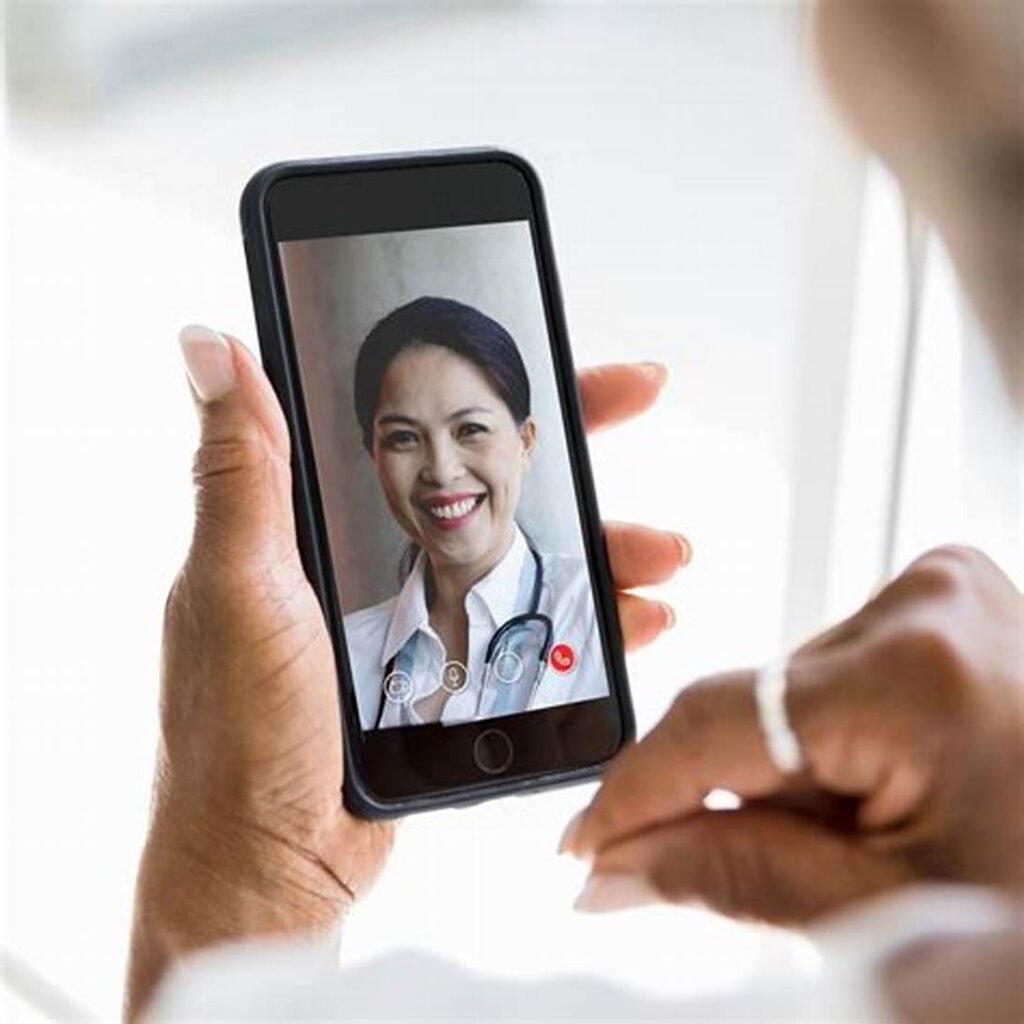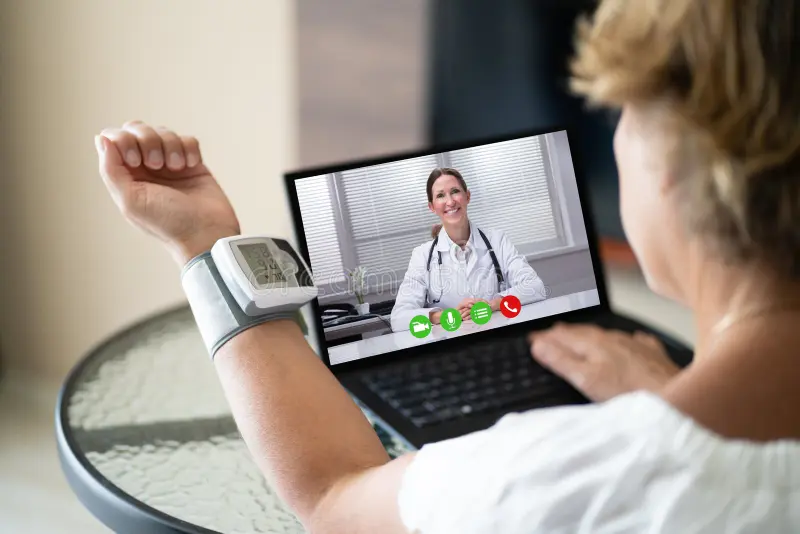
Introduction to Telehealth and Virtual Consultations
Telehealth and virtual consultations have emerged as transformative components of modern healthcare, enabling individuals to receive medical services remotely. These innovative approaches utilize telecommunications technology to provide a range of health-related services, including diagnoses, treatment plans, and follow-up care, without the need for in-person visits. This accessibility aligns well with the evolving landscape of healthcare, characterized by the growing demand for cost-effective solutions that prioritize convenience.
Telehealth encompasses a broad spectrum of services, from consultations with primary care physicians to specialty care consultations. Virtual consultations typically involve video conferencing or phone calls, allowing patients to interact with healthcare professionals in real-time. These services are particularly advantageous for those living in rural or underserved areas, where medical facilities may be limited. Furthermore, they serve as a vital resource during public health emergencies, such as the COVID-19 pandemic, enabling continued access to care while minimizing the risk of viral transmission.
The technology behind telehealth is continuously evolving, integrating advanced software and secure platforms to ensure patient privacy and data protection. These systems allow for secure communication between providers and patients, as well as easy access to medical records and prescriptions. As smartphones, tablets, and computers become more prevalent, the ease of accessing telehealth services increases, encouraging wider adoption among diverse populations.
Telehealth addresses a myriad of health issues ranging from routine check-ups to chronic disease management. Patients seeking advice on dermatological concerns, mental health support, or nutritional guidance can all benefit from virtual consultations. As awareness of these services grows, telehealth is not only reshaping how healthcare is delivered but also expanding the possibilities for maintaining health and well-being in an increasingly digital world.
Benefits of Telehealth for Budget-Conscious Individuals
Telehealth has emerged as a cost-effective alternative to traditional healthcare methods, particularly appealing to budget-conscious individuals. One of the most significant financial advantages of telehealth is the substantial reduction in travel costs. Patients can consult healthcare providers from the comfort of their homes, eliminating expenses related to transportation, such as fuel costs or public transport fares. This not only saves money but also valuable time that can be directed toward other productive activities.
Additionally, telehealth appointments typically incur lower consultation fees compared to in-person visits. Many healthcare providers recognize the reduced overhead associated with virtual consultations and pass these savings onto their patients. Consequently, individuals seeking affordable medical advice can find that telehealth services offer competitive pricing, facilitating access to essential healthcare services without financial strain. This is particularly beneficial for those with limited health insurance coverage or high-deductible plans.
Another remarkable advantage of telehealth is the ability to access a wider range of pharmacy services, often at reduced prices. Many telehealth platforms partner with pharmacies to provide patients with prescription medications at lower rates than traditional retailers. This accessibility to more affordable medication options is a boon for individuals managing chronic conditions or needing ongoing treatment, allowing them to adhere to their medical regimens without overwhelming financial burdens.
Moreover, telehealth’s flexibility supports individuals in maintaining their health without the stress of exorbitant expenses. By integrating telehealth into their healthcare strategy, patients can not only manage their immediate health needs but also promote a sustainable budget-conscious approach to overall well-being. This combination of benefits serves to underscore telehealth as an invaluable resource for those mindful of their financial health.

Telehealth and its Role in Fitness and Dieting
Telehealth has emerged as a transformative tool in the realms of fitness and dieting, allowing individuals to access expert advice from the comfort of their homes. The convenience of virtual consultations has been particularly beneficial for those seeking to improve their overall health without incurring substantial costs associated with traditional in-person visits.
One of the key advantages of telehealth in fitness is the ability to connect with certified fitness coaches who offer personalized workout plans tailored to individual needs. These virtual consultations allow for real-time feedback and adjustments, enabling individuals to maintain motivation and accountability. Whether someone is a beginner or looking to enhance existing fitness routines, online interactions can effectively guide them through tailored programs that accommodate their lifestyle and personal preferences.
Similarly, in the context of dieting, telehealth facilitates consultations with registered nutritionists and dietitians who can provide customized meal plans and nutritional advice. This personal touch is essential, as dietary needs vary significantly among individuals based on factors such as age, metabolism, and activity level. With telehealth, dietitians can assess one’s specific situation accurately, making recommendations that are both realistic and sustainable. This results in more effective methods to reach health objectives within a budget-friendly framework.

Moreover, engaging with health professionals via telehealth mitigates barriers such as time constraints and geographical limitations. Users can schedule appointments at their convenience, ensuring that they receive the support they need while adhering to their daily routines. This accessibility not only helps foster a sense of community and support among individuals on their health journeys but also reinforces the vital role of telehealth in making fitness and dieting resources available to a broader audience.
AI in Health: Revolutionizing Telehealth Services
Artificial intelligence (AI) is increasingly playing a pivotal role in the transformation of telehealth services, making virtual consultations not only more efficient but also more accessible. The integration of AI technologies into healthcare has the potential to enhance patient experiences dramatically, simplifying processes that traditionally required in-person visits. By employing AI-powered tools, healthcare providers can enable symptom checking, triage patients, and even monitor chronic conditions more effectively.
One significant advancement in AI applications is the development of sophisticated algorithms that can analyze patient symptoms reported through telehealth platforms. These intelligent systems can offer preliminary assessments and suggest possible health issues, guiding patients towards appropriate care pathways. This means patients receive timely advice and can avoid unnecessary trips to healthcare facilities, ultimately contributing to a more cost-effective solution for healthcare delivery.
In addition to initial assessments, AI is also essential in managing chronic diseases. For patients with conditions like diabetes or hypertension, AI-driven platforms can track vital signs, medication adherence, and lifestyle habits. This continuous monitoring allows healthcare professionals to intervene when necessary, adjusting treatment plans efficiently to cater to changing patient needs. The result is a more personalized approach to care that enhances patient outcomes while reducing healthcare expenditures.
Moreover, AI technology supports telehealth providers by streamlining administrative tasks, such as appointment scheduling and follow-up reminders. By automating these processes, healthcare professionals can focus more on patient interactions, providing quality care without the traditional constraints of time and resources. Consequently, the infusion of AI into telehealth not only promotes healthier living while remaining budget-friendly but also aligns with the broader goal of making healthcare more equitable and accessible.
Ensuring Privacy and Security in Virtual Consultations
As telehealth continues to revolutionize patient care, concerns surrounding privacy and data security have emerged as paramount considerations. Safeguarding personal information during virtual consultations is a primary concern for both healthcare providers and patients. To address these concerns, numerous measures have been implemented to ensure that the confidentiality and integrity of patient data remain intact throughout the telehealth experience.
Healthcare providers utilize a variety of technologies to bolster security during virtual consultations. One critical approach is the use of end-to-end encryption for video and audio communications. This technology ensures that the information shared between patients and providers remains confidential and inaccessible to unauthorized individuals. By encrypting data, healthcare professionals can provide a secure environment where patients feel safe sharing sensitive medical information.
Additionally, many healthcare platforms employ robust authentication processes to verify the identity of both patients and providers. Biometric identification, such as fingerprints or facial recognition, can enhance security measures, ensuring that only authorized users can access personal health information. Moreover, providers often use secure portals for storing and sharing medical records, further protecting sensitive data from unauthorized access.
It is also essential for telehealth practitioners to adhere to federal regulations, such as the Health Insurance Portability and Accountability Act (HIPAA), which sets strict standards regarding the protection of patient health information. Compliance with these regulations not only assures patients of their rights regarding privacy but also instills confidence in the telehealth system as a whole.
In conclusion, the safety of personal data during virtual consultations should not be underestimated. By understanding the measures in place for privacy and security, patients can feel more at ease when engaging with telehealth services. The commitment to protecting patient information is vital to fostering trust and ensuring that telehealth remains a viable option for accessible healthcare.
The Accessibility of Telehealth for Different Demographics
Telehealth has emerged as a pivotal tool in enhancing healthcare accessibility, particularly for various demographics that traditionally face barriers to receiving medical care. One of the significant advantages of telehealth services is their ability to reach individuals residing in rural areas. In many instances, these patients have limited access to healthcare facilities due to distance or lack of transportation. Telehealth bridges this gap by allowing patients to consult healthcare professionals from the comfort of their homes, thus reducing travel time and costs associated with in-person visits.
Moreover, the elderly population benefits significantly from telehealth services. Many older adults may struggle with mobility issues or may not have reliable transportation options. Telehealth provides a feasible solution, enabling them to engage in consultations without the risk and stress associated with travel. Additionally, telehealth platforms often come equipped with user-friendly interfaces that have been designed with elderly users in mind, making virtual consultations more accessible and fostering independence in managing their health.
Individuals with disabilities also find telehealth to be a valuable resource. Traditional healthcare settings may not always accommodate their specific needs, creating further obstacles in accessing care. Virtual consultations eliminate many of these hurdles, allowing people with disabilities to seek the medical attention they require from suitable environments. Telehealth promotes inclusivity by ensuring accessible health services are extended to everyone, regardless of physical limitations or geographical barriers.
Incorporating telehealth into the healthcare landscape not only expands access but also encourages proactive health management among various demographics. With the significant rise in telehealth adoption, more individuals can now receive timely and appropriate care, leading to improved health outcomes and overall well-being.
Telehealth: Supporting Mental Health and Well-Being
Telehealth has rapidly emerged as a vital resource for mental health support, offering individuals an accessible and efficient means of benefiting from therapy and counseling services. The convenience of virtual consultations aligns well with the modern-day demands of busy lifestyles, allowing patients the opportunity to engage with mental health professionals from the comfort of their own homes. This ease of access can reduce barriers to seeking help, making mental health care more widely available to those who may otherwise hesitate to reach out.
One significant advantage of telehealth services is their affordability. Online mental health consultations often cost less than traditional in-person appointments, making therapy more budget-friendly for individuals and families. Many platforms now offer a variety of pricing options, including sliding scale fees based on income and subscription services that lessen the financial burden of ongoing support. This shift towards cost-effective mental health care enables individuals to prioritize their well-being without incurring significant expenses.
Additionally, telehealth can enhance mental well-being through its flexibility. Patients have the freedom to schedule appointments at times that best fit their routines, minimizing disruptions in their daily lives. This models a more accommodating approach to mental health that acknowledges the various challenges people face. Furthermore, the option to choose among a diverse pool of providers enhances the likelihood that individuals will find a therapist or counselor who aligns with their needs and preferences, thereby improving the overall quality of care received.
In conclusion, telehealth provides a compelling avenue for mental health support by fostering an environment conducive to healing and growth. Through virtual consultations, individuals can access affordable, flexible, and personalized therapy options that significantly contribute to their mental health and overall well-being. By leveraging this innovative approach, people have the potential to enhance their mental resilience, leading to a healthier, more balanced life.
Challenges and Limitations of Telehealth
While telehealth services offer numerous advantages, it is essential to address the challenges and limitations that individuals may face when utilizing these services. One significant barrier is the availability of technology. Not all patients have access to reliable internet service or the necessary devices to participate in virtual consultations. This digital divide can exacerbate existing health disparities, particularly among low-income populations and elderly individuals who may not be as tech-savvy. Ensuring equitable access to telehealth requires systemic changes to provide adequate resources for those at a disadvantage.
Another concern is the potential lack of personal interaction during telehealth visits. Face-to-face consultations allow for non-verbal cues and a deeper human connection, which can be crucial for building trust between patients and healthcare professionals. In contrast, virtual appointments may lead to miscommunication or a sense of disconnection, causing patients to feel less engaged in their healthcare journey. Additionally, some healthcare providers argue that telehealth may not fully capture the nuances of a patient’s condition, thereby impacting the quality of care rendered.
Moreover, while many health issues can be addressed through telehealth, certain diagnoses necessitate in-person visits for accurate assessments, such as physical examinations, imaging, or lab tests. Patients with complex conditions may find that telehealth consultations fall short of providing comprehensive care, ultimately leading to delays in essential treatment. Consequently, while telehealth offers a convenient, budget-friendly approach to healthcare, recognizing its limitations is critical for a balanced perspective on its role in promoting healthy living.
The Future of Telehealth and Virtual Consultations
The future of telehealth and virtual consultations holds considerable promise for transforming healthcare delivery while emphasizing cost-effectiveness. As technology continues to evolve, the integration of advanced systems will likely deliver more efficient and accessible healthcare solutions. Emerging enhancements in telehealth platforms, such as improved user interfaces and compatibility with a broader range of devices, are poised to make virtual consultations even more user-friendly and accessible, particularly for underserved populations.
Moreover, policy changes at both national and local levels are expected to support the continued expansion of telehealth services. Governments and healthcare organizations are increasingly recognizing the benefits of telehealth in terms of improved patient outcomes and reduced healthcare costs. Legislation that supports reimbursement for virtual consultations will encourage providers to adopt telehealth solutions more widely, ultimately making these services a viable alternative for patients seeking budget-friendly healthcare options.
Another critical aspect influencing the future of telehealth is the growing integration of artificial intelligence (AI) technologies. From chatbots providing initial assessments to sophisticated algorithms predicting patient health trends, AI can enhance the quality and efficiency of virtual consultations. Such innovations have the potential to streamline patient triage processes and allow healthcare providers to focus their expertise on more complex cases while still maintaining a high level of service for routine matters. This not only reduces operational costs but also optimizes resources, making healthcare more accessible and affordable.
In summary, the future of telehealth and virtual consultations looks bright, with technological advancements and policy reforms paving the way for a more integrated and cost-effective healthcare system. As these developments unfold, they will likely yield a significant shift towards a more comprehensive approach to healthcare that prioritizes accessibility and affordability, benefiting both patients and providers alike.
